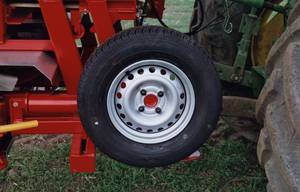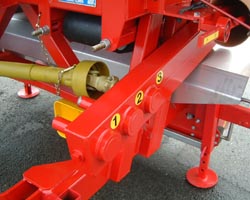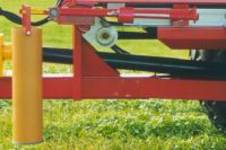|
|
Bredal
spreaders utilise many features to ensure their accuracy reliability
and simplicity remains unrivaled
|
|
| |
|
Spread pattern
The Bredal F2
utilses the double double overlap principle of spreading. Each disc
spreads tramline to tramline giving maximum overlap for practical
on farm tolerance. The large diameter disc's each have 6 vanes allowing
the system to accommodate large quantities of fertilser ideal for
high application rates on roots and increased forward speeds.
|
|
| |
|
Drive line
Drive from the
PTO is transferred to the disc's via the spinner box. The heavy
duty kevlar lined belt runs on stainless steel pulleys for maximum
belt life.
|
|
|
Headland system
The headland
system limits the spread of material to the field boundary. The
system works by reducing the speed of the headland side disc and
altering the point where fertiliser hits the discs.
|
|
|
| |
|
Spread width
The F2 can spread
at any width from 12m to 36m without changing any parts! The spread
width is set by altering disc speed via the tractors PTO and setting
the drop point at which fertiliser comes on to the disc.
|
|
| |
|
Precise metering
Unlike most
other spreaders Bredal machines use a forced metering system. Rather
than relying on gravity and the fertiliser flowing through a hole
in the base of a hopper the Bredal positively delivers fertiliser
from the hopper on a belt. The rate can then be regulated simply
by altering the speed of the belt and the height of the door.
|
|
|
Ground
wheel drive
The
belt is driven by a ground wheel running against the tractors
rear wheel. Drive then goes through a three speed gearbox
to the belt allowing for high medium or low rates. This
system ensures the same application rate is applied regardless
of forward speed.
|
 |
 |
|
Calibration
Because
the volume of material leaving the hopper for any given setting
is known, calibration is just a case of establishing the bulk
density of the material being spread. The standard machine mounted
calibration kit quickly finds the bulk density (kg per litre)
of the material and a single setting chart is used to set the
application rate for all material.
|
 |
|
| |
|
.
|
|
| |
| |